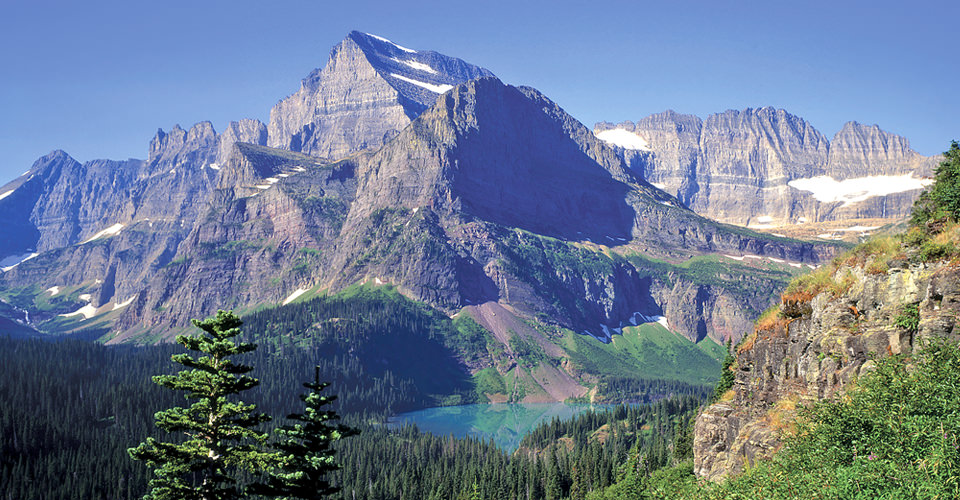Montana’s nickname is Big Sky Country for its wide open spaces. It has one of the lowest population, it even has more cows than people. There are more big mammals like elk, buffalo and grizzlies found in Montana than anywhere else in the country. It is the largest landlocked state. Part of Yellowstone National Park is in Montana.

World Wars
Montana sent a higher percentage of men to fight in World War I and World War II than any other state. After a successful propaganda campaign in 1917, more than 12,500 Montanans volunteered for military service. The government over-estimated Montana’s population and drafted another 28,000 men. Around 40,000 men from Montana went to war, about 10% of its population and a higher percentage than any other state. During the Great Depression many Montanans signed up for military service and after the outbreak of WWII more would join. By the end of the war, about 57,000 men and women from Montana would serve. Again, Montana would send around 10% of its population and again it was a higher percentage than any other state.
Native American Education
Montana is the only state with a constitutional mandate to teach tribal history. In 1972, Montana amended its constitution so that it would help preserve Native American cultural history through education. Then in 1999 with the Indian Education for All Act, it was ordered that the state’s educational agencies work with the tribes in Montana to include information about American Indian history and culture in schools. It also says that every student, whether Native or not, should “be encouraged to learn about the distinct and unique heritage of American Indians in a culturally responsive manner.” Montana also provides resources for educators on teaching this material. While implementing these policies hasn’t always been smooth sailing, Montana is dedicated to educating its people on its Native American history.
The Miracle of America Museum

The Miracle of America Museum, sometimes called the Smithsonian of the West, is home to all sorts of American artifacts and antiques. The museum was founded in 1981 by Gil and Joanne Mangels and is located in Polson, Montana. Gil had spent decades collecting all sorts of Americana and eventually decided to open a museum. He continued collecting and now the museum has 300,000 artifacts that occupy over 40 buildings. He estimates that it would take someone four days to see each one. The museum has everything from clothes, cars, guns, dolls, wagons to a 65-foot-tall Paul Bunyan and so much more. If you are ever in Montana and want to see one of the largest collections of Americana stop by the Miracle of America Museum.
Jeanette Rankin
Jeanette Rankin was the first women elected to the U.S House of Representatives and the first women elected to federal office and would serve two terms. She was born in Montana in 1880. Rankin was the president of Montana Women’s Suffrage Association. She worked hard on promoting suffrage and in 1914, Montana became the seventh state to grant women unrestricted voting rights. Then in 1916 she ran for one of Montana’s at-large House seats. She ran as a Progressive and traveled all across the state campaigning and won the most votes. Rankin continued to fight for nationwide voting rights for women as well as push for better working conditions for laborers. Montana changed to single-member districts during her term and knowing that she wouldn’t be elected again she chose to run for the Senate. She lost and came in third. She ran for Congress again in 1940, as a lifelong pacifist she ran on an antiwar platform. She won and was the only member of Congress to vote against war on Japan. She abstained from voting to declare war on Germany and Italy. It was a move that was widely criticized but she said that she had stated she would vote against war and that’s what she did. She knew after that her political career was over. After her time in politics, she spent a couple of decades traveling the world. Then in the 1960s and 1970s a new generation of feminists and those antiwar found her to be an inspiration. She died in 1972 at the age of 92.
International Peace Park

Montana is home to the world’s first international peace park. As far back as the late 1800s, there were those who wanted a borderless park with Canada. The proposed site was Waterton Lakes National Park in Alberta, Canada and Glacier National Park, known as the Crown of the Continent, in Montana. In 1931, the Rotary Clubs of both Alberta and Montana met to discuss ways of trying to make this happen. They both decided to petition their governments for the creation of a Peace Park. Acts were passed in Canada and America in 1932 and the Waterton-Glacier International Peace Park was created. It is considered by many to be one of the most beautiful places in the world.
